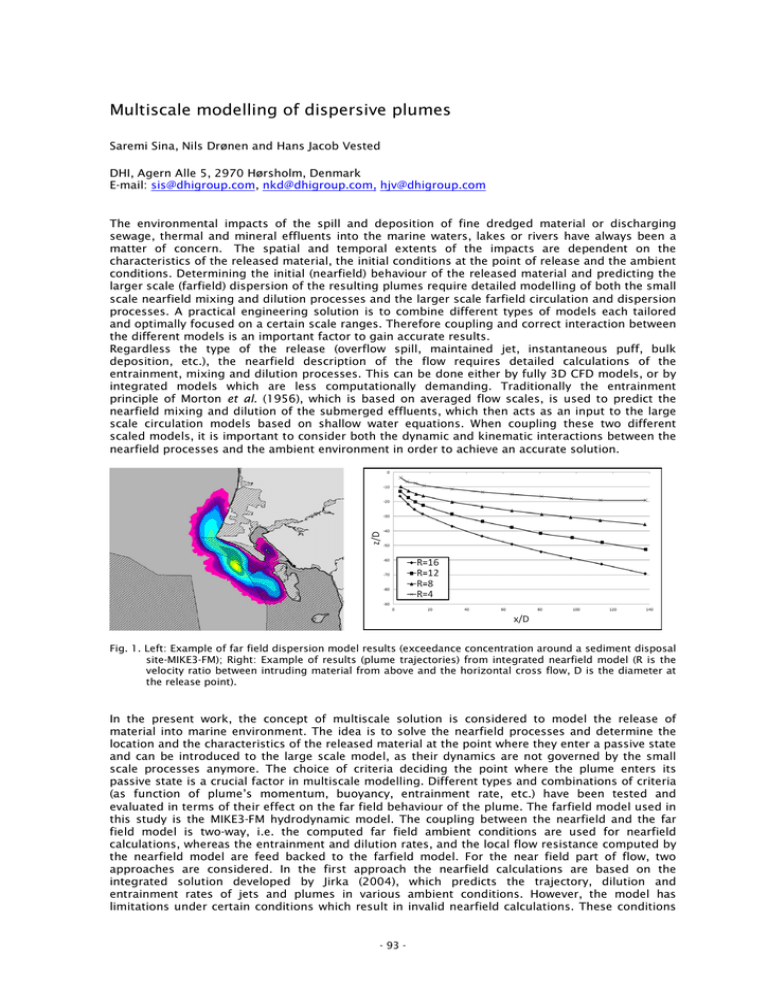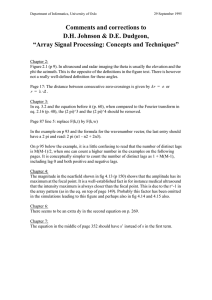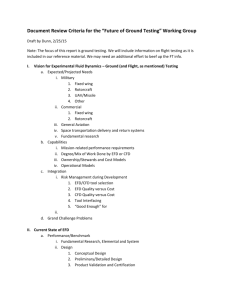Multiscale modelling of dispersive plumes
advertisement

Multiscale modelling of dispersive plumes Saremi Sina, Nils Drønen and Hans Jacob Vested DHI, Agern Alle 5, 2970 Hørsholm, Denmark E-mail: sis@dhigroup.com, nkd@dhigroup.com, hjv@dhigroup.com The environmental impacts of the spill and deposition of fine dredged material or discharging sewage, thermal and mineral effluents into the marine waters, lakes or rivers have always been a matter of concern. The spatial and temporal extents of the impacts are dependent on the characteristics of the released material, the initial conditions at the point of release and the ambient conditions. Determining the initial (nearfield) behaviour of the released material and predicting the larger scale (farfield) dispersion of the resulting plumes require detailed modelling of both the small scale nearfield mixing and dilution processes and the larger scale farfield circulation and dispersion processes. A practical engineering solution is to combine different types of models each tailored and optimally focused on a certain scale ranges. Therefore coupling and correct interaction between the different models is an important factor to gain accurate results. Regardless the type of the release (overflow spill, maintained jet, instantaneous puff, bulk deposition, etc.), the nearfield description of the flow requires detailed calculations of the entrainment, mixing and dilution processes. This can be done either by fully 3D CFD models, or by integrated models which are less computationally demanding. Traditionally the entrainment principle of Morton et al. (1956), which is based on averaged flow scales, is used to predict the nearfield mixing and dilution of the submerged effluents, which then acts as an input to the large scale circulation models based on shallow water equations. When coupling these two different scaled models, it is important to consider both the dynamic and kinematic interactions between the nearfield processes and the ambient environment in order to achieve an accurate solution. Fig. 1. Left: Example of far field dispersion model results (exceedance concentration around a sediment disposal site-MIKE3-FM); Right: Example of results (plume trajectories) from integrated nearfield model (R is the velocity ratio between intruding material from above and the horizontal cross flow, D is the diameter at the release point). In the present work, the concept of multiscale solution is considered to model the release of material into marine environment. The idea is to solve the nearfield processes and determine the location and the characteristics of the released material at the point where they enter a passive state and can be introduced to the large scale model, as their dynamics are not governed by the small scale processes anymore. The choice of criteria deciding the point where the plume enters its passive state is a crucial factor in multiscale modelling. Different types and combinations of criteria (as function of plume’s momentum, buoyancy, entrainment rate, etc.) have been tested and evaluated in terms of their effect on the far field behaviour of the plume. The farfield model used in this study is the MIKE3-FM hydrodynamic model. The coupling between the nearfield and the far field model is two-way, i.e. the computed far field ambient conditions are used for nearfield calculations, whereas the entrainment and dilution rates, and the local flow resistance computed by the nearfield model are feed backed to the farfield model. For the near field part of flow, two approaches are considered. In the first approach the nearfield calculations are based on the integrated solution developed by Jirka (2004), which predicts the trajectory, dilution and entrainment rates of jets and plumes in various ambient conditions. However, the model has limitations under certain conditions which result in invalid nearfield calculations. These conditions - 93 - are often due to the breakdown of the boundary layer nature of the flow which is the basis of calculations in the integrated model. In order to further study the nearfield behaviour of the released material, and evaluating the performance of the integrated model under different conditions, a second approach is attempted where a 3D multiphase CFD model - developed and evaluated by Saremi (2014) - is used to supplement the simple model. The results from the CFD simulations will shed light on the role of important parameters driving the nearfield processes and the limitations of the integrated models. The choice of passive criteria which link the nearfield models to the farfield models will be studied and evaluated by using the CFD model to simulate the details of the plumes dynamics. The detailed results from the CFD model will be transformed into a parametric database with the possibility of replacing the integrated nearfield models in the multi-scale solutions, when they reach beyond their limits of validity. Fig. 2. Examples of CFD results (concentration contours) of simulating the overflow spill of fine dredged material from hoppers. Top: horizontal cross section view; Bottom: 3D view. The aim of this study is to provide a robust and widely applicable multiscale model to calculate the nearfield behaviour of the released material and insert it into larger scale models, which their final accuracy in predicting the environmental impacts of the released material into the ambient environment relies strongly on the release conditions provided by the nearfield model. The CFD model can also be used as a useful tool in more complex engineering purposes, scientific and design applications. References Jirka G.H. 2004. Integral model for turbulent buoyant jets in unbounded stratified flows. Part I: Single round jet. Environmental Fluid Mechanics 4(1):1-56. Morton B.R., G. Taylor and J.S. Turner 1956. Turbulent gravitational convection from maintained and instantaneous sources. Proceedings of the Royal Society of London. Series A. Mathematical and Physical Sciences 234(1196):1-23. Saremi S. 2014. Density driven currents and deposition of fine materials (Doctoral dissertation). Technical University of Denmark, Lyngby, Denmark. Winterwerp J. C. 2002. Near-field behaviour of dredging spill in shallow water. Journal of Waterway, Port, Coastal, and Ocean Engineering 128(2):96-98. - 94 -


